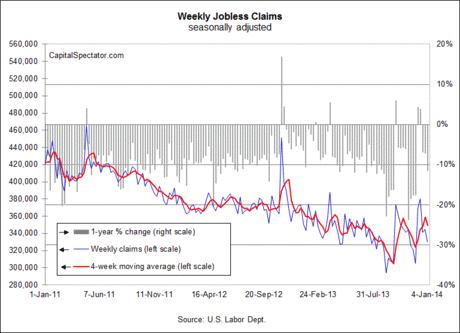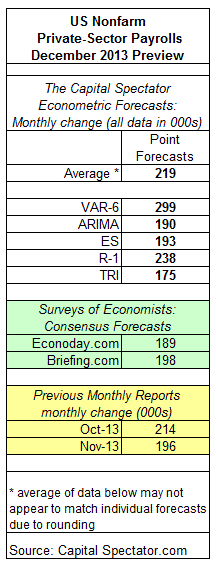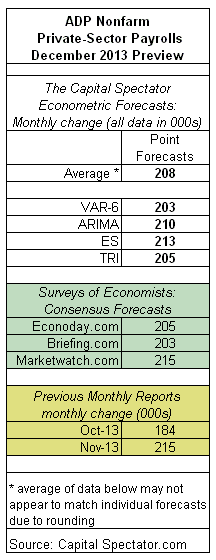● The Investor’s Paradox: The Power of Simplicity in a World of Overwhelming Choice
By Brian Portnoy
Summary via publisher, Palgrave Macmillan
Investors are in a jam. A troubled global economy, unpredictable markets, and a bewildering number of investment choices create a dangerous landscape for individual and institutional investors alike. To meet this challenge, most of us rely on a portfolio of fund managers to take risk on our behalves. Here, investment expert Brian Portnoy delivers a powerful framework for choosing the right ones – and avoiding the losers. Portnoy reveals that the right answers are found by confronting our own subconscious biases and behavioral quirks. A paradox we all face is the natural desire for more choice in our lives, yet the more we have, the less satisfied we become – whether we’re at the grocery store, choosing doctors, or flipping through hundreds of TV channels. So, too, with investing, where there are literally tens of thousands of funds from which to choose. Hence “the investor’s paradox”: We crave abundant investment choices to conquer volatile markets, yet with greater flexibility, the more overwhelmed and less empowered we become.
● The Demographic Cliff: How to Survive and Prosper During the Great Deflation of 2014-2019
By Harry S. Dent Jr.
Review via Business Insider
Take one look at Harry Dent’s body of work and you’ll know he likes to make predictions…. What’s ahead now? A “demographic cliff,” according to Dent’s new book: Demographic Cliff: How to Survive and Prosper During the Great Deflation of 2014-2019. “At Dent Research we have a not-so-secret weapon: demographics,” Dent writes. “It is the ultimate indicator that allows you to see around corners, to predict the most fundamental economic trends not just years but decades in advance.” Dent spends the bulk of his book arguing that the demographic story has turned against the U.S. As Boomers retire, it’s not an unfamiliar argument. Dent writes that an aging U.S. will cause deflation that will weaken the economy from 2014-2019.
● In Bed with Wall Street: The Conspiracy Crippling Our Global Economy
By Larry Doyle
Review via Kirkus Review
A former Wall Street insider excoriates the current nonsystem of alleged self-regulation and weak government regulation in the finance industry. After being employed as a mortgage-backed securities trader at Bank of America, Bear Stearns and other large financial firms, Doyle became disillusioned and departed. He now runs his own investment practice and serves as something of a whistle-blower. The problems he discusses are mostly familiar to readers conversant in current American politics: the coziness of legislators and lobbyists; campaign contributions meant to sway thinking and, sometimes, votes; government regulatory agencies, such as the Securities and Exchange Commission, that seem more watchful than they are, as well as so-called self-regulatory groups within the Wall Street community that rarely protect investors from inexcusable financial losses. With great intensity, Doyle focuses on a little-known self-regulator called the Financial Industry Regulatory Authority. His deep digging into the operations of that group qualifies as investigative journalism, and the scandalous details he recounts are impressive.
● Taxifornia: Liberals’ Laboratory to Bankrupt America
By James V. Lacy
Summary via publisher, Post Hill Press
The biggest and most important state in America was once a land of opportunity in a wonderful climate. But times have surely changed. Things have never been worse for California and its citizens. California’s “one-party” domination of the liberal faction of the California Democratic Party and their union and environmental lobby cronies have wrecked havoc on California, and all Americans are losing as a result. In Taxifornia, James V. Lacy identifies and examines the true causes of California’s decline. Californians are victims of the heaviest taxation in all of America, and those high taxes are now steadily destroying the state’s economy.
● Restoring Shared Prosperity: A Policy Agenda from Leading Keynesian Economists
Edited by Thomas I. Palley and Gustav A Horn
Summary via ThomasPalley.com
Edited by Thomas I. Palley and Gustav A. Horn. The economic recovery in the US since the Great Recession has remained sub-par and beset by persistent fear it might weaken again. Even if that is avoided, the most likely outcome is continued weak growth, accompanied by high unemployment and historically high levels of income inequality. In Europe, the recovery from the Great Recession has been even worse, with the euro zone beset by an unresolved euro crisis that has already contributed to a double-dip recession in the region. This book offers an alternative agenda for shared prosperity to that on offer from mainstream economists. The thinking is rooted in the Keynesian analytic tradition, which has been substantially vindicated by events. However, pure Keynesian macroeconomic analysis is supplemented by a focus on the institutions and policy interventions needed for an economy to generate productive full employment with contained income inequality. Such a perspective can be termed “structural Keynesianism”. These are critical times and the public deserves an open debate that does not arbitrarily or ideologically lock out alternative perspectives and policy ideas. The book contains a collection of essays that offer a credible policy program for shared prosperity, rooted in a clear narrative that cuts through the economic confusions that currently bedevil debate.
● The Upside of Down: Why the Rise of the Rest is Good for the West
By Charles Kenny
Review via Publishers Weekly
China is poised to overtake the U.S. as the world’s largest economy within the next 15 years, but, according to former World Bank economist Kenny, there is a silver lining for the U.S. economy. Kenny continues in the optimistic vein of his first book, Getting Better, as he explains why America losing its status as the unchallenged global superpower doesn’t have to mean declining living standards for its citizens. “America is a country made great by the founding principles of broad-based democracy, education, civil rights, and openness embodied in [the Constitution]”—qualities that Americans should be glad to see spread throughout the world. As developing countries grow richer and more educated, global values will converge. Kenny decries the simplistic reasoning inherent in judging nations based solely on their GDP or military: “being biggest and among the richest hasn’t helped the United States stake a global lead on measures of the broader quality of life.”
● The Watchdog That Didn’t Bark: The Financial Crisis and the Disappearance of Investigative Journalism
By Dean Starkman
Review via The Nation Institute
Nothing defined the financial crisis of 2008 as much as the degree to which it took the public — and the press — by surprise. In a world of twenty-four-hour news coverage and financial reporting, how could so many mainstream journalists, covering something so closely, miss something so big while a few, mostly outside the mainstream, got it? More broadly, what did the business press’s failure say about contemporary journalism’s ability to explain looming systemic problems to the public? In this sweeping, incisive study, Dean Starkman answers those questions, exposing the critical shortcomings that softened coverage during the mortgage era and the years leading up to the collapse. The Watchdog That Didn’t Bark travels back to the early twentieth century to find the roots of the problem in business news’s origin as a market messaging service geared toward investors.







